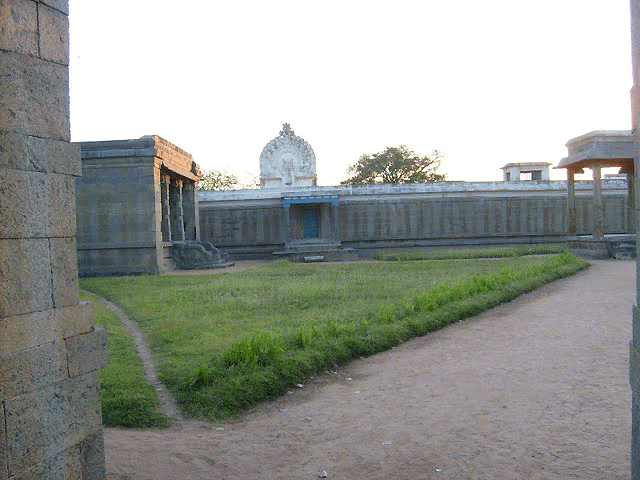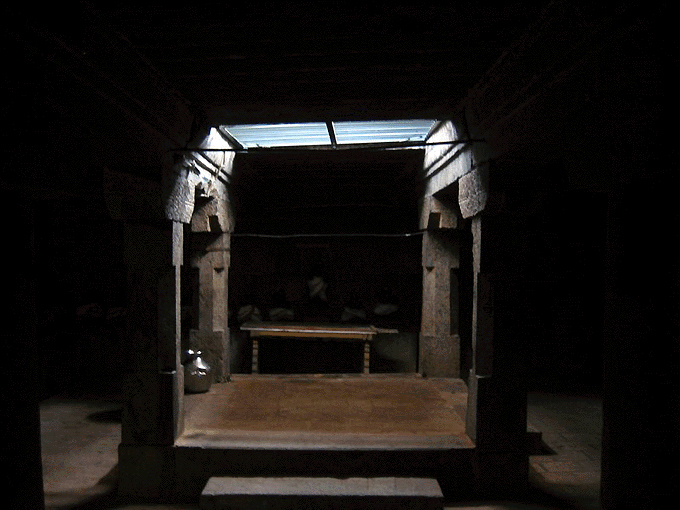
|
|
|
|
The presiding deity is quite unusual, being an amalgamation of the Trimurti divinity. The deity's crown gives the appearance of Lord Shiva's matted locks of hair, and He has a third eye on the forehead. Like Narayana, He holds the conch and chakra, as well as a lotus, and He stands on a lotus pedestal. Lord Brahma is said to be embodied in the lotus emblems, Shiva in the hair, and Narayana in the conch and chakra. Across the River Palar sits another famous temple, the Pazhaya Seevaram Narasimha Swamy Temple, and these two temples are often mentioned together, due to an annual pastime engaged in by the presiding deities from each. The Pazhaya Seevaram temple is just before the town of Wallajabad. Because of their close proximity, the location of the Thirumukkoodal Appan Venkatesa Perumal Temple is sometimes given as Pazhayaseevaram, although that more properly refers to Lord Nrsimhadeva's site across the river.
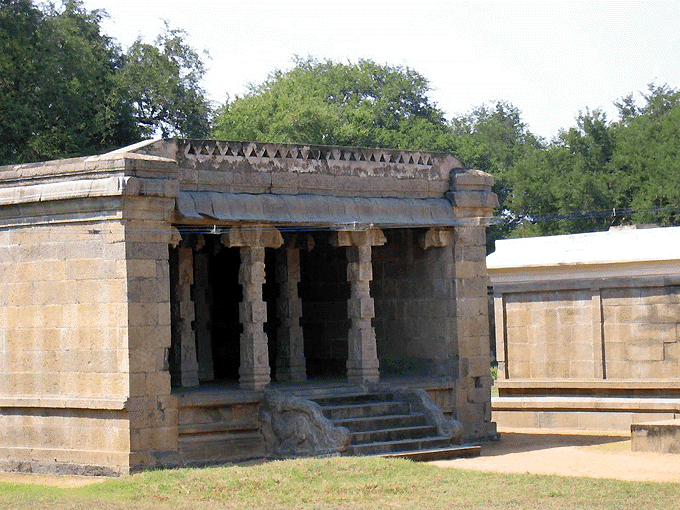
Thirumukkoodal mandapam Sri Venkatesa Perumal Temple has existed since at least the 9th century, and inscriptions show that it existed under the rule of the Pallava monarch, Nripatungavarman. It is now maintained by the Archeological Survey of India (ASI) as a protected site. According to the epigraphs in this shrine, Tirumukkudal was situated in the ancient territorial sub-division called Madhurantaka-Chaturvedimangalam, which was a part of Kalatur-kottam, a district of Jayamkonda-chola-mandalam. The legends associated with the temple endow it with great historical significance. They describe the story of Raja Tondaiman Chakravarti, a devoted follower of Venkatesa Perumal. The Lord offered the king his conch and chakra, to save his empire from foreign invasion. Later the king erected this temple to glorify the Lord.
This Pallava style temple is quite large, and is constructed in an unusual style. Devotees enter through a side entrance near the perimeter of the temple compound. A mandapa with large pillars leads the way to the sanctum sanctorum, which faces north. The pillars have exquisite bas-relief sculptures. Various inscriptions speak of endowments and gifts made to the temple during the Chola reign.
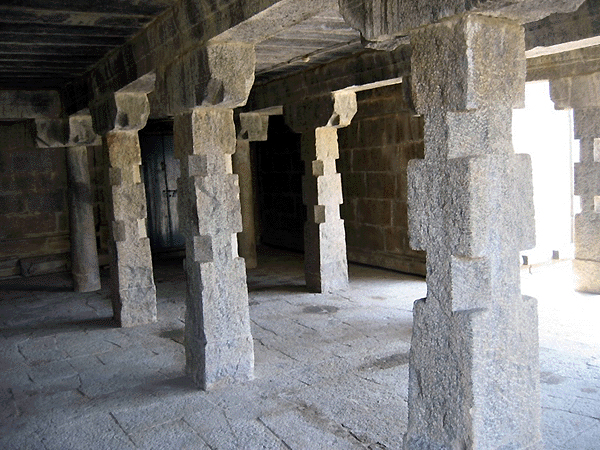
Pillared Hall In the sanctum, Sri Appan Venkatesa Perumal is found in a standing position with His consorts Boomadevi (Bhudevi) and Sridevi meditating at His feet, and the sage Markandeya (Karumanickar) beside Him on one wide, with Sudarshan chakra on the other.
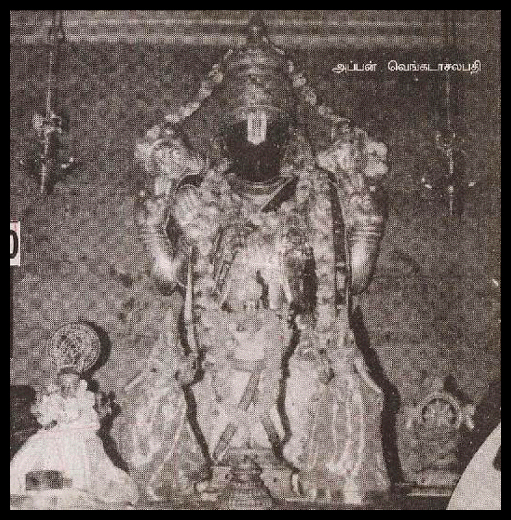
Sri Appan Venkatesa Perumal To the right of the presiding deities is a small shrine for the Goddess Alamelumanga, which faces east. 'Alamelumanga' is Tamil for Padmavati, a representation of Laksmi Devi. Other murtis located nearby include Garuda, Hanuman, and others. There are also stone murtis of many of the Azhwars.
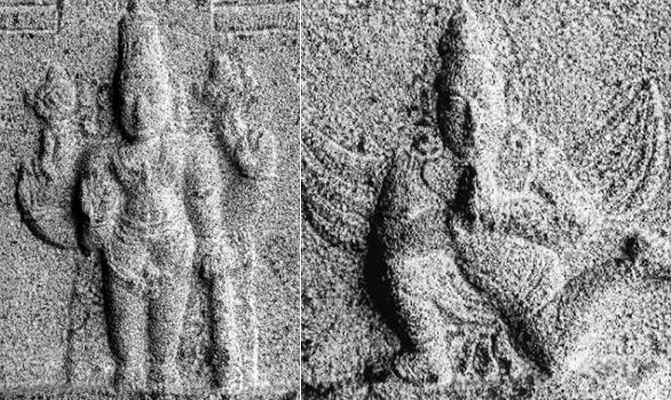
Lord Venkateswar and Garuda A spacious courtyard houses several mantapams, the pillars ornately carved with bas-relief sculptures done in Vijayanagara style, depicting various incarnations of the Lord, Mahalakshmi, Rama, Garuda, Hanuman and Ramanuja.
The temple grounds have a large tree along the river bank, although above the confluence, the rivers are sometimes dry. Regardless, because of the temple's close proximity to the river sangam, it was designed with an expectation of periodic flooding. In the mandapam behind the main sannidhi a drainage system was constructed, so water could flow around the temple, rather than through it.
Aside from the rare nature of the presiding deity here, one of the aspects of Sri Appan Venkatesa Perumal Temple that is of greatest historical significance is the presence of proliferate inscriptions, all around the temple environs. The walls of the main sanctum as well as those of the second prakara are covered in epigraphs, in ancient Tamil script. The oldest can be dated to the reign of Pallava ruler Nripatungavarman, in the 9th century A.D. There are also many Chola inscriptions dated to the reign of Rajaraja I, who built the Brihadeshvara Temple at Tanjore, featured in yesterday's segment.
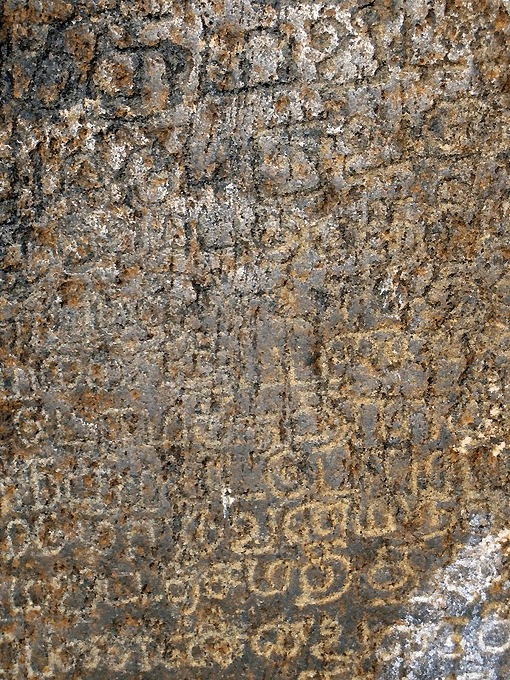
Temple Epigraphs Other inscriptions mention Rajendra-I, Vira-Rajendra and Kulottunga-I, referring to endowments and gifts made to Thirumukkoodal temple, which clearly enjoyed great popularity during the Chola reign. Among the many fascinating inscriptions found here, aside from those documenting the presence of the presiding deity, are epigraphs engraved on the east wall of the first prakara. They belong to the period of Vira-Rajendra Chola, 1062-1070 A.D. This long epigraphical record, which winds along the temple walls, documents the existence of an important Vedic college located inside the temple's Jananatha-mantapa, during the 11th century A.D. Eight subjects were taught, including the Rig Veda, Yajur Veda and grammar. The number of students enrolled, the number of teachers for each subject, and the daily stipends paid to them are all detailed in the inscriptions.
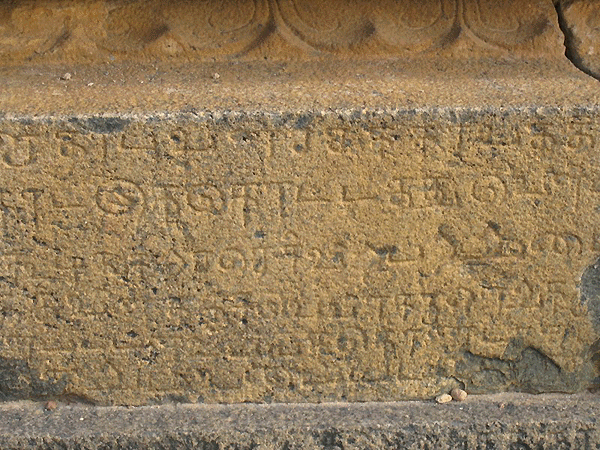
Temple Epigraphs The epigraphs also document that an Ayurvedic hospital (athura-salai) was attached to the temple, and students and temple staff were treated there. This hospital, called Vira-Cholan, had 15 beds and a large staff of physicians, including a surgeon named Kodandaraman Ashvathaman-Bhattan, who performed operations in the hospital. Many nurses attended the patients, and servants fetched medicinal herbs. The names of some 20 Ayurvedic medicines stored in the hospital are also documented in the inscriptions. This full-fledged hospital at Thirumukkoodal, while essentially Ayurvedic, falls into the category of the Siddha system of medicine adopted by the Tamils. Thanks to these ancient epigraphs, Thirumukkoodal Temple is considered a monument of national importance, these being the longest Chola inscriptions on record. More than a thousand years old, they represent some of the earliest known definitions for "doctor" and "nurse" on record.
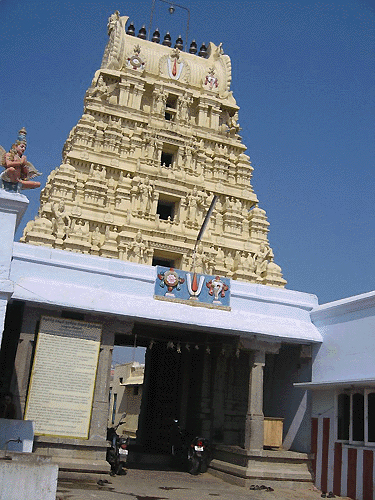
Laksmi-Nrsimha Temple, Pazhaya Sheevaram
Across the River Palar from Thirumukkoodal Temple is the abode of Sri Laksmi-nrsimha Swamy at Pazhaya Seevaram Narasimha Swamy Temple. Each year, the two deities engage in a pastime together of visiting with Lord Varadaraja of Kanchipuram, on the day following Sankranthi (Mattu Pongal day in the Tamil month of Thai). This religious observance is known as Pazhaiya Seevaram Paarivettai, which celebrates the Lord's destruction of demonic forces. A similar festival is held in many Visnu temples in the area. On this day, Lord Varadarajaswami leaves his abode in Kanchipuram and crosses the river along with Lord Lakshmi Narasimha, whose own temple is situated atop a small hill in Pazhaya Seevaram, on the opposite shore of the Palar River from Thirumukkoodal. Lord Varadarajaswami and Sri Lakshmi Narasimha Swamy come to Thirumukkoodal to visit Sri Appan Venkatesa Perumal. The deities process from one temple mandapa to the next, and devotees throng to the temple to get Their darshan.
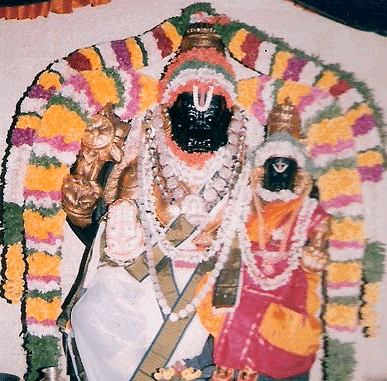
Sri Sri Laksmi-Nrsimha Swamy Lord Nrsimhadev is a very large Santha-murti (sweet and charming), and is very beautiful indeed. In His home temple, Sri Laksmi-Nrsimha sits facing Kanchipuram. His temple is at the place where Goddess Mahalaksmi is said to have pacified the Lord. Although not connected to Thirumukkoodal in the way that Pazhaya Seevaram is, there are a few other temples in the local area, including the Cheetanancheri Kaleeswarar Temple and Ilayanar Velur Murugan Temple.
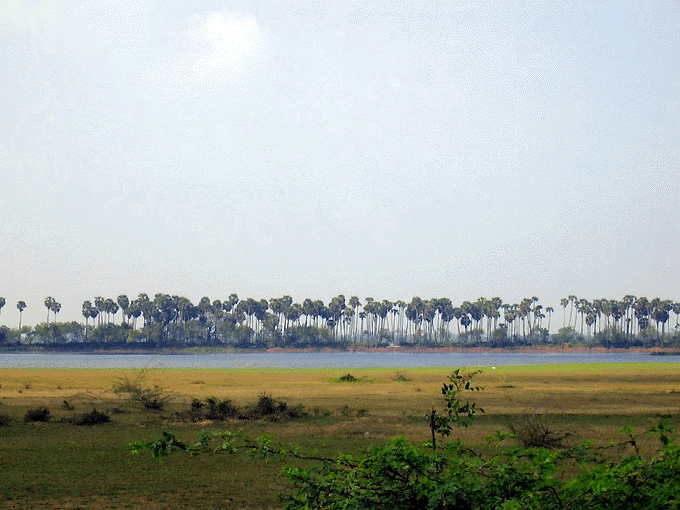
Drive to Thirumukkoodal The River Kaveri (Cauvery) also flows nearby. Here, it is also known as the Kabini or Kapila River. It is said that an invisible theertham, the Spatika Sarovara, or Crystal Lake' is also found here, and it is dedicated to Lord Agastheeswara.
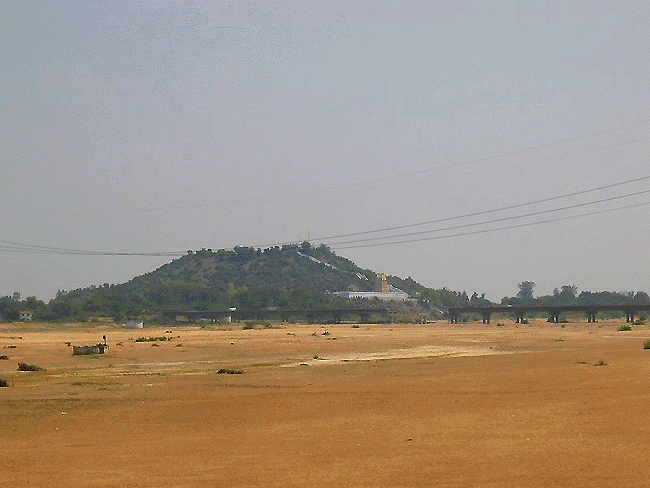
Laksmi-Nrsimha Temple on hillside
| |
